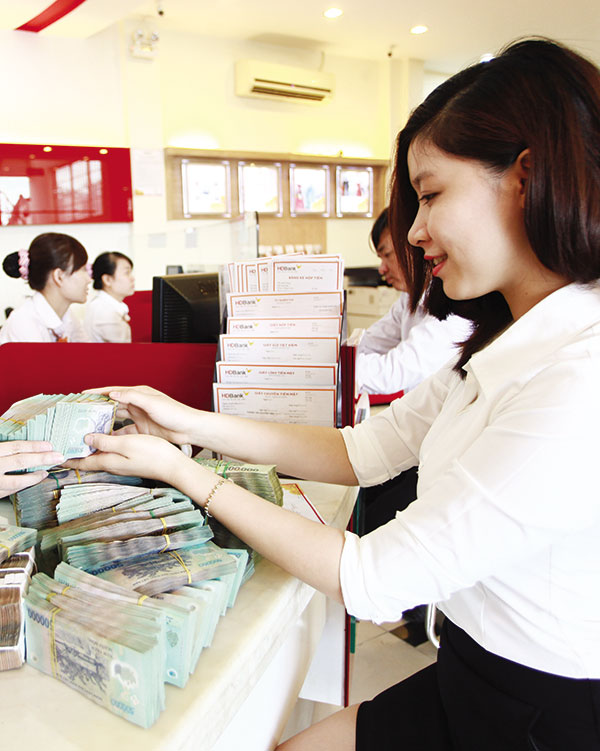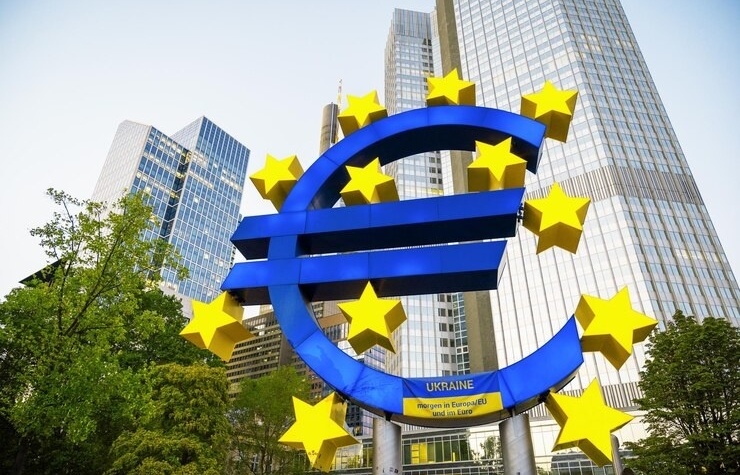Bad loans still plague banks
 |
| Experts agree that bad debts represent a threat to the economy-Photo: Le Toan |
Experts and economists, at a conference on bad debts held last week, all agreed that the ineffective handling of non-performing loans (NPL) in Vietnam can be summarised into four major concerns, including the lack of specific legal regulations on NPL, the limited power given to the Vietnam Asset Management Company (VAMC) to trade bad loans, an absent common ground or market for NPL trading, and a legal framework that has not been in place to boost transparency of NPL trading.
“We have been very good at trapping NPL into VAMC over the past years and proactively trying to deal with the bad loans. The banking system has to compromise a lot as well,” said BIDV acting deputy general director Can Van Luc. “But we definitely need some breakthroughs now. For a breakthrough in policies and mechanisms, we suggest that it’s time for the government to come up with a separate law on NPL, as there are too many issues related to NPL currently.”
Going along with such a law, Luc noted that VAMC should also be equipped with more power to deal with bad loans, namely the ability to dispose of collateral assets and trade bad loans at either a profit or loss.
“The second breakthrough is having an NPL market that stipulates the buying and selling of bad loans at the market price,” added Luc. “Experience from Thailand and Malaysia shows that the issue of NPL can only be solved when bad loans are in fact traded in line with market mechanisms.”
What is more important, according to Luc, would be involving the participation of investors in the NPL market. “We ought to really encourage both foreign and domestic investors to take part in the buying and selling of bad debts in Vietnam.”
“We can allow foreign investors to entrust a third party in Vietnam to trade NPL, similar to what South Korea has done successfully.”
The country’s NPL ratio, as at the end of September, was recorded at 2.62 per cent, a figure for which Luc believes does not take into account the amount of NLP sold to VAMC that have not been collected, and debts that have been restructured under Decision 780 on classification of rescheduled loans enacted last year.
“The bad debt ratio, as such, may well add up to 7 per cent of the total outstanding debts, consisting of the recently announced NPL and the NPL sold to VAMC that have not been collected, consisting of approximately 85 per cent of what the debt agency has bought,” said Luc.
He also added that Swiss-backed Credit Suisse’s calculation of Vietnam’s NPL ratio is currently standing at 8 per cent of total outstanding debts, whilst the International Monetary Fund (IMF) has come up with a NPL range as high as 10-11 per cent.
“The actual NPL ratio in accordance with international standards can hardly be a single-digit figure. NPL thus remains a real threat for the entire economy,” stressed lawyer Truong Thanh Duc of Banking-Securities-Investment Law Co., Ltd.
According to VAMC chairman Nguyen Quoc Hung, the government’s debt management arm has collectively bought a total of VND262 trillion ($11.96 billion) of NPL from credit institutions during the period of 2013 through to September 30, at 87 per cent book value of the NPL. The debt agency has so far collected roughly 14 per cent of the total debts taken under its care, equivalent to approximately VND35 trillion ($1.59 billion) or 42.8 per cent of the total NPL.
Credit institutions, meanwhile, themselves have resolved VND313.74 trillion ($14.33 billion) worth of bad debts - occupying 57.2 of the total NPL recorded - by means of setting aside risk provisions, sales of collateral, collecting debts, or restructuring their debts in line with the SBV’s Decision 780.
What the stars mean:
★ Poor ★ ★ Promising ★★★ Good ★★★★ Very good ★★★★★ Exceptional
Latest News
More News
- IFC ties up with Welcome Financial Group in non-performing loans (June 28, 2024 | 19:55)
- Maybank Investment Bank opens new Hanoi branch (June 28, 2024 | 17:47)
- Fiscal rigidity a challenge for nation’s economic aspirations (June 28, 2024 | 14:19)
- Policy credit brings facelift to Kien Giang (June 27, 2024 | 19:07)
- Vietnam's sustainable bonds reach $800 million in value (June 27, 2024 | 19:01)
- FiinRatings assigns Mcredit a 'stable' A- credit rating (June 27, 2024 | 08:30)
- Public Bank Vietnam completes acquisition of RHB Securities Vietnam (June 26, 2024 | 20:22)
- IFC offers $150 million financing package to SeABank (June 25, 2024 | 11:40)
- K-Sure grants financial support to Korean firms in PetroVietnam projects (June 25, 2024 | 11:30)
- Banks remain wary of low credit growth (June 24, 2024 | 19:00)

















 Mobile Version
Mobile Version